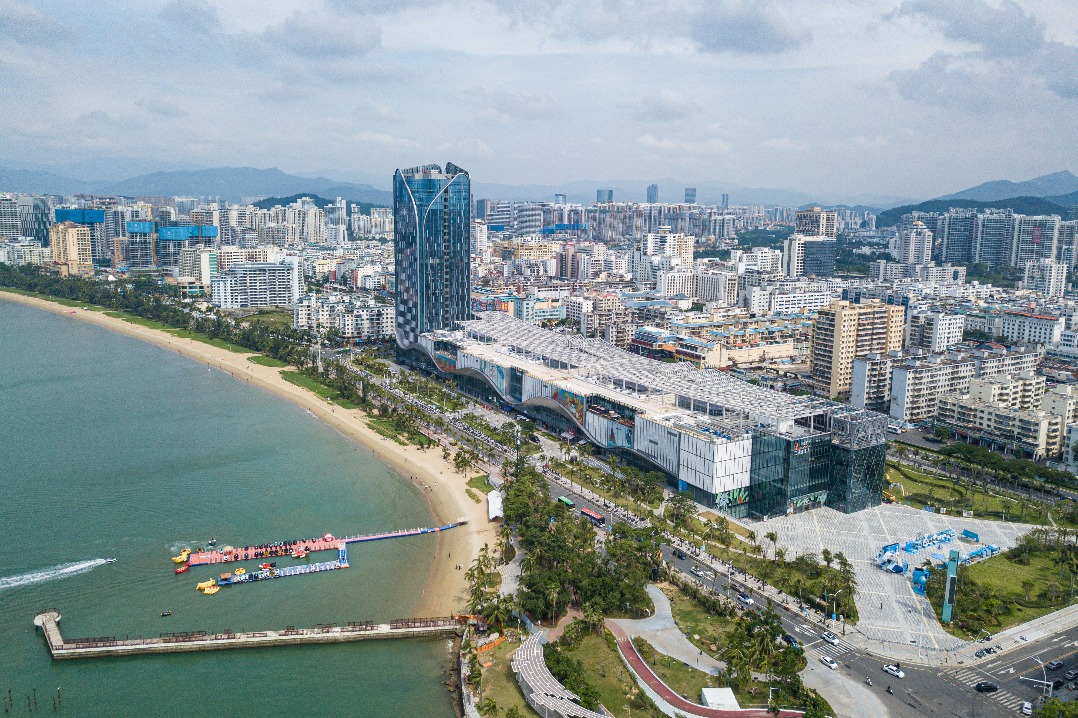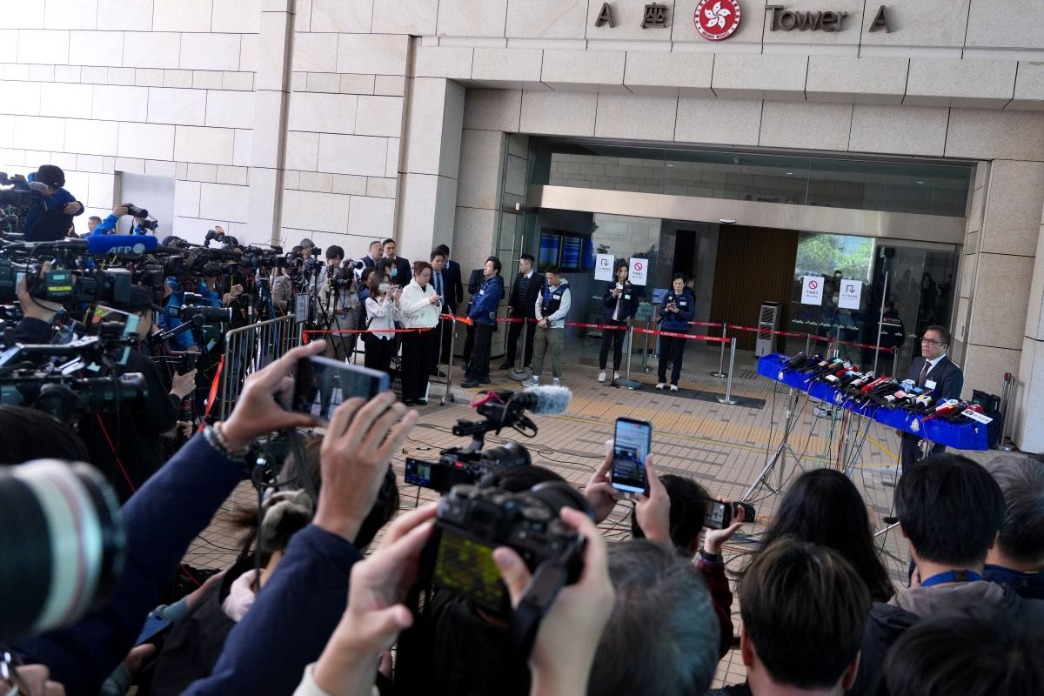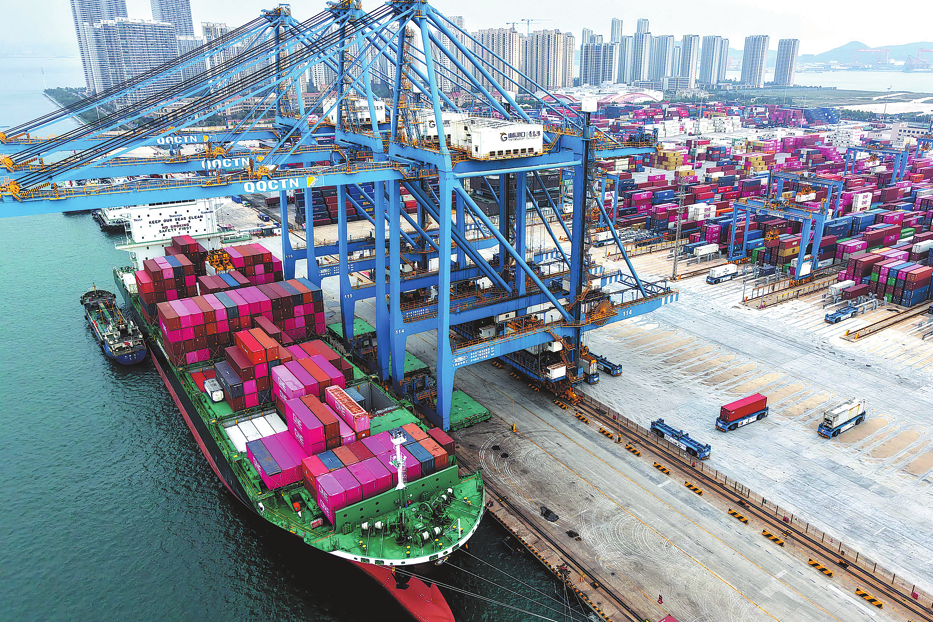Rising headwinds


Restructuring of the global economic landscape poses challenges for Chinese economy
The sanctions on Russia imposed by the US-led Western countries in the wake of the Russia-Ukraine crisis and Russian counter-sanctions have not only wreaked havoc on the international economic and trade order, but also greatly undermined the institutional foundation of economic globalization. The rules-based global multilateral governance system established after World War II is retrogressing toward the geopolitics-based economic arrangements before the crisis. The global economic landscape is undergoing unprecedented profound adjustments, with the theme of the times shifting from "peace and development" toward "security and development".
The global economy has displayed two trends — the "small-yard, high-fence" strategy based on values and a restructuring of industrial chains prioritizing security. There are three different multilateral circles with different institutional arrangements in the Asia-Pacific and Indian Ocean Region — the 11 members of the already existing Comprehensive and Progressive Agreement for Trans-Pacific Partnership led by Japan, the 15 member countries of the Regional Comprehensive Economic Partnership, and the "Indo-Pacific" Economic Framework for Prosperity spearheaded by the United States.
The US has also introduced its Infrastructure Investment and Jobs Act, the CHIPS and Science Act and the Inflation Reduction Act, etc., which aim at promoting industrial chains to flow back to the US through subsidies or punishments and relocating production in countries or regions that supposedly share the same values as the US.
The Russia-Ukraine conflict has led to a surge in energy and food prices across the world, pushing the global economy toward stagflation. It is likely that the global economy will experience a recession in 2023.Major international organizations have all substantially lowered their global GDP growth projections for 2022 and 2023. The International Monetary Fund forecasts that about one-third of the world economy faces two consecutive quarters of negative growth. For many people, "2023 will feel like a recession "due to price hikes and squeezed real incomes.
With the impacts from the Russia-Ukraine conflict and the COVID-19 pandemic, the world is witnessing an interaction process between industrial restructuring and the geopolitical restructuring, which poses grave challenges to the Chinese economy that is deeply integrated into economic globalization.
China's economic performance fell short of expectations in 2022, with a GDP growth rate lower than the government's annual target for the first time and lower than other major Asian economies for the first time since 1990. This presents a stern test for a country that is striving to avoid the "middle-income trap". The Chinese government has taken a slew of measures to prop up growth, such as using strong growth in exports to cushion the impact of sluggish growth in consumption and using strong growth in infrastructure investment to cushion the impact of shrinking property investment. However, due to the global economic downward pressures and weakness in infrastructure investment, this approach is difficult to sustain. In 2023, China has to take strong, effective measures to revive growth.
A restructuring of the global industrial landscape is not only a result of de-globalization endeavors, but also brings about new opportunities arising from new arrangements of globalization.
To start with, the global industrial chain is clustering at the central region of Eurasia, making the Belt and Road Initiative all the more significant. Along the Belt and Road routes, there already exist two multilateral international cooperation mechanisms — APEC and the RCEP. China is a major member of both mechanisms, playing a pivotal role. Furthermore, China has a gigantic manufacturing industry, making it possible for the country to strengthen and complement the industrial chains along the Belt and Road routes. As a matter of fact, the sanctions and counter-sanctions in the wake of the Russia-Ukraine conflict have made developing economies more aware of the importance of defending their own interests, instead of picking sides. This has been quite evident in the proposed expansion of APEC and BRICS membership and the first China-Gulf Cooperation Council Summit — which decided to establish and strengthen the China-GCC strategic partnership. Moreover, infrastructure connectivity under the Belt and Road Initiative has made tremendous progress and is constantly making new headway.
Second, China should go all out to invest in the low-carbon economy and make it a priority for consumption expansion, as well as a significant way of offsetting the adverse effects of a possible "decoupling". Against the backdrop of a historic downturn in property investment and sluggish growth in government-led infrastructure investment, the low-carbon economy is a promising investment field for China. Compared with high-tech sectors such as the chip industry, China has no tech gap with the United States in the low-carbon economy and is leading the world in areas of supply-side wind and solar power technologies and demand-side new energy vehicles and battery technologies. The US-led Western countries have no advantage in the low-carbon technological competition. On the contrary, both countries and the world at large think this is an area that calls for greater cooperation between the two sides.
Third, China should make policy preparations for financial risks brought by a historic downturn in the property sector. It's predicted that the Chinese population will witness negative growth starting from 2022, marking an end to the era of rigid absolute demand in the property sector brought by the sustained increase of the population. Rapid changes on the demand side could result in severe adjustments on the supply side, as well as rapid financial deleveraging. The property sector accounts for 16 percent of Chinese GDP. A flagging property sector, combined with its upstream and downstream sectors, has a huge impact on the broader economy.
Last, the Russia-Ukraine conflict has dealt a heavy blow to the global financial markets, among which the wild fluctuations in US dollar index calls for special attention. The US dollar index came into being after the Bretton Woods system was abolished in 1973 and the US dollar was unpegged from gold. In history, the three sharp rises and declines in the US dollar index have all dealt a heavy blow to the global economy. A sharp rise in US dollar index not only caused currency and debt crises for developing economies, but also resulted in changes to the international currency structure and financial turmoil. According to the IMF and the World Bank estimates, currently, lots of economies, such as Argentina, Turkiye, Lebanon, Nepal, Cambodia, Pakistan and Peru, are facing the risk of debt defaults. China is the largest creditor of a number of these economies, and this presents the biggest external risk to the Chinese economy.
The author is chairman of BOCI Research Limited. The author contributed this article to China Watch, a think tank powered by China Daily.


































